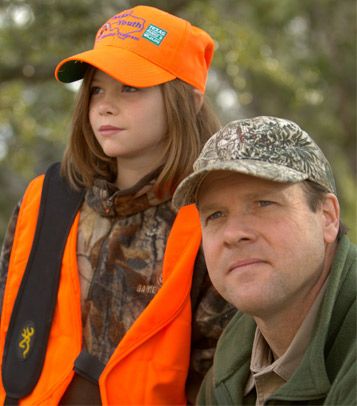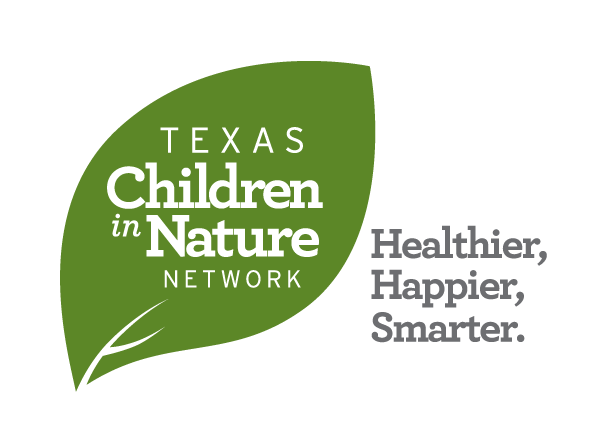
Are Tomorrow’s Conservation Leaders
When children are given the chance to connect with nature at a young age, they are more likely to care about it as adults. Below are articles relating to how connecting kids with nature will help develop the next generation of environmental stewards.
Converging Evidence From Diverse Fields Offers Causal Support for Nature’s Impact on Learning, Development and Environmental Stewardship
Do experiences with nature –– from wilderness backpacking to plants in a preschool to a wetland lesson on frogs, promote learning? Until recently, claims outstripped evidence on this question. But the field has matured, not only substantiating previously unwarranted claims but deepening our understanding of the cause-and-effect relationship between nature and learning. Hundreds of studies now bear on this question, and converging evidence strongly suggests that experiences of nature boost academic learning, personal development, and environmental stewardship. This brief integrative review summarizes recent advances and the current state of our understanding. The research on personal development and environmental stewardship is compelling although not quantitative. Report after report –– from independent observers as well as participants themselves –– indicate shifts in perseverance, problem-solving, critical thinking, leadership, teamwork, and resilience. Similarly, over fifty studies point to nature playing a key role in the development of pro-environmental behavior, particularly by fostering an emotional connection to nature. In academic contexts, nature-based instruction outperforms traditional instruction. The evidence here is particularly strong, including experimental evidence; evidence across a wide range of samples and instructional approaches; outcomes such as standardized test scores and graduation rates; and evidence for specific explanatory mechanisms and active ingredients. Nature may promote learning by improving learners’ attention, levels of stress, self-discipline, interest, and enjoyment in learning, and physical activity and fitness. Nature also appears to provide a calmer, quieter, safer context for learning; a warmer, more cooperative context for learning; and a combination of “loose parts” and autonomy that fosters developmentally beneficial forms of play. It is time to take nature seriously as a resource for learning — particularly for students not effectively reached by traditional instruction.
- Kuo, Ming, Michael Barnes, and Catherine Jordan. 2019. “Do Experiences With Nature Promote Learning? Converging Evidence of a Cause-and-Effect Relationship.” Frontiers in Psychology 10. https://doi.org/10.3389/fpsyg.2019.00305.
Childhood Experience of Green Environments is Associated With Greater Environmental Knowledge and Adult Pro-environmental Attitudes.
Spending time in natural areas as a child is associated with adult pro-environmental attitudes and feelings of being connected with the natural world, and is also associated with a stronger sense of place.
A systematic literature review was conducted on research related to the benefits of time in nature for children under twelve years old. Inclusion criteria of the review included peer-reviewed research published in English between 1990 and 2011 that had a robust methodology and focused on children’s experiences in nearby nature. These criteria yielded 61 studies that were categorized based on the specific benefits that were addressed in the research. The review identified benefits for children related to time in nature in the general areas of health, well-being, cognitive processes, social skills, emotional/behavior issues, and ethics/attitude towards the natural world. The studies were grouped together by specific benefit to develop an overall assessment of the extent to which evidence supports the existence of each benefit.
Overall, the literature review supports the view that spending time in nature is an important childhood experience that promotes their healthy development, well-being and positive attitudes towards the natural world. The review helps to shed particular light on the relationship between benefits and the way in which children engage with the natural environment, highlighting “the value of more playful engagement styles such as free play, exploration, leisure and child initiated learning.” An overall theme was that more playful engagement with nature was associated with health benefits as well as positive environmental attitudes and less playful approaches, such as school gardening projects and field trips, yielded more educational benefits. This insight into the importance of children’s playful engagement with the natural world is an important contribution to the literature and provides support for “initiatives that allow for more open-ended, child-directed and playful experiences in natural environments.”
- Gill, Tim. 2014. “The Benefits of Children’s Engagement with Nature: A Systematic Literature Review.” Children, Youth and Environments 24 (2): 10–34. https://doi.org/10.7721/chilyoutenvi.24.2.0010.
Environmental Literacy and Building Youth Able to Meet Environmental Challanges
Building environmental literacy (EL) in children and adolescents is critical to meeting current and emerging environmental challenges worldwide. Although environmental education (EE) efforts have begun to address this need, empirical research holistically evaluating drivers of EL is critical. This study begins to fill this gap with an examination of school-wide EE programs among middle schools in North Carolina, including the use of published EE curricula and time outdoors while controlling for teacher education level and experience, student attributes (age, gender, and ethnicity), and school attributes (socio-economic status, student-teacher ratio, and locale). Our sample included an EE group selected from schools with registered school-wide EE programs, and a control group randomly selected from NC middle schools that were not registered as EE schools. Students were given an EL survey at the beginning and end of the spring 2012 semester. Use of published EE curricula, time outdoors, and having teachers with advanced degrees and mid-level teaching experience (between 3 and 5 years) were positively related with EL whereas minority status (Hispanic and black) was negatively related with EL. Results suggest that school-wide EE programs were not associated with improved EL, but the use of published EE curricula paired with time outdoors represents a strategy that may improve all key components of student EL. Further, investments in teacher development and efforts to maintain enthusiasm for EE among teachers with more than 5 years of experience may help to boost student EL levels. Middle school represents a pivotal time for influencing EL, as improvement was slower among older students. Differences in EL levels based on gender suggest boys and girls may possess complementary skills sets when approaching environmental issues. Our findings suggest ethnicity related disparities in EL levels may be mitigated by time spent in nature, especially among black and Hispanic students.
Direct Experience and Mentoring Are Key Elements
The focus of this recent research from Dr. Louise Chawla is on those factors that contribute to individuals choosing to take action to benefit the environment when they are adults. This is a reprise of earlier research by Dr. Chawla in the 1990s (Journal of Environmental Education, 1998, 1999). Positive, direct experience in the out-of-doors and being taken outdoors by someone close to the child-a parent, grand parent, or other trusted guardian-are the two most significant contributing factors. While lifelong activism is the primary focus of Dr. Chawla’s inquiry, as reported in this article, her well-documented study includes citations and explanations of many additional benefits to children from early experiences in the out-of-doors. Creativity, physical competence, social skills, environmental knowledge, confidence, and problem-solving ability are among those benefits to children’s development. Given the important role of adults in taking children into the out-of-doors, Dr. Chawla is specific about the attributes of the experiences those adult mentors provide. She states, the "adults gave attention to their surroundings in four ways-care for the land as a limited resource essential for family identity and well-being; a disapproval of destructive practices; simple pleasure at being out in nature; and a fascination with the details of other living things and elements of the earth and sky." Modeling those attributes while in the presence of the child does even more. As Dr. Chawla states, "The very fact that a parent or grandparent chose to take the child with them to a place where they themselves found fascination and pleasure, to share what engaged them there, suggests not only care for the natural world, but, equally, care for the child." (Original Research and Synthesis)
- Chawla, Louise. "Learning to Love the Natural World Enough to Protect It," in Barn nr. 2 2006:57-58. © 2006 Norsk senter for barneforskning. Barn is a quarterly published by the Norwegian Centre for Child Research at the Norwegian University of Science and Technology, Trondheim, Norway. This article was written for a special issue in honor of the Norwegian child psychologist, Per Olav Tiller.
Loss of Contact with Nature is Nature’s Loss
Not only does the loss of children’s outdoor play and contact with the natural world negatively impact the growth and development of the whole child and their acquisition of knowledge, it also sets the stage for a continuing loss of the natural environment. The alternative to future generations who value nature is the continued exploitation and destruction of nature. Research is clearly substantiating that an affinity to and love of nature, along with a positive environmental ethic, grow out of children’s regular contact with and play in the natural world.
Connection with Nature is Learned
Children’s development with little or no regular contact with the natural world is seen as a process of socialization by which children come to see themselves as separate and not a part of the natural world (Phenice & Griffore 2003, Sobel 1996). If children’s developing sense of self becomes disconnected from the natural world, then nature comes to be seen as something to be controlled and dominated rather than loved and preserved. The child develops biophobia that can range from discomfort and fear in natural places to a prejudice against nature and disgust for whatever is not manmade, managed or air-conditioned (Cohen 1993, Bixler, et al. 1994, Orr 1993).
Fostering Empathy with Wildlife
Sobel (1996) advocates that in addition to regular contact with nature, one of the best ways to foster empathy during early childhood is to cultivate children’s relationships with animals. Young children feel a natural kinship with, and are implicitly drawn to animals and especially baby animals (Rosen 2004, Sobel 1996). Animals are an endless source of wonder for children, fostering a caring attitude and sense of responsibility towards living things. Children interact instinctively and naturally with animals, talk to them, and invest in them emotionally (Sobel 1996). A little-known fact about children and animals is that studies of the dreams of children younger than age 6 reveal that as many as 80% of their dreams are about animals (Acuff 1997, Patterson 2000). An addition significance of animals’ symbolic importance to children is that animals constitute more than 90% of the characters employed in language acquisition and counting in children’s preschool books (Kellert 1983).
